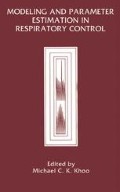Abstract
Previous work has shown that respiratory rate, airflow pattern shape, and the end-expiratory lung volume level can be predicted by an optimal control model based on minimum cycle work rate1,2. One prediction which can affect ventilatory control is a decrease in end-expiratory lung volume level which is graded according to the level of exercise. Such a decrease is consistently observed at the start of exercise and occurs in a feed-forward or predictive manner. One of the consequences of a decreased lung volume is lengthening of the diaphragm, which according to the length-tension characteristics of skeletal muscle increases active tension. Lowering of lung volume requires activation of expiratory muscles, and this work is stored as elastic energy and can be recovered during the following inspiration. This constitutes a potential additional ventilatory drive independent of chemical factors. Expiratory muscle work is stored as elastic work, and depending on whether activity is tonic or phasic will lead to different tidal volume increases. This paper makes a quantitative estimate of the magnitude of these effects on minute ventilation during exercise. Another consequence of lung volume optimization has to do with gas exchange. Lowering of lung volume could decrease dead space, which would increase alveolar ventilation for a given minute ventilation. However, a decrease in lung volume might also lead to collapse of airway units and increased heterogeniety of ventilation and perfusion which would impair gas exchange. Experiments dealing with this issue are also reviewed.
Access this chapter
Tax calculation will be finalised at checkout
Purchases are for personal use only
Preview
Unable to display preview. Download preview PDF.
References
S.M. Yamashiro and F.S. Grodins, Optimal regulation of respiratory airflow, J. Appl. Physiol. 30: 597 (1971).
S.M. Yamashiro and F.S. Grodins, Respiratory cycle optimization in exercise, J. Appl. Physiol. 35: 522 (1973).
M. Younes and W.A. Riddle, Model for the relation between respiratory neural and mechanical outputs, I. Theory. 51: 963 (1981).
J.S. Gray, The multiple factor theory of the control of respiratory ventilation, Science 102: 739 (1946).
E.J. Cha and S.M. Yamashiro, Unpublished data.
Author information
Authors and Affiliations
Editor information
Editors and Affiliations
Rights and permissions
Copyright information
© 1989 Plenum Press, New York
About this chapter
Cite this chapter
Yamashiro, S.M., Grodins, F.S. (1989). Consequences of Lung Volume Optimization on Exercise Hyperpnea. In: Khoo, M.C.K. (eds) Modeling and Parameter Estimation in Respiratory Control. Springer, Boston, MA. https://doi.org/10.1007/978-1-4613-0621-4_4
Download citation
DOI: https://doi.org/10.1007/978-1-4613-0621-4_4
Publisher Name: Springer, Boston, MA
Print ISBN: 978-1-4612-7896-2
Online ISBN: 978-1-4613-0621-4
eBook Packages: Springer Book Archive

